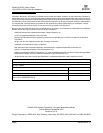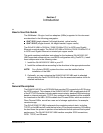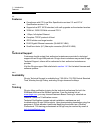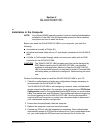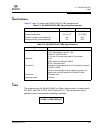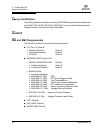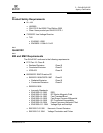
2 – QLA4010/4010C
Installation in the Computer
2-2 IS0053302-00 B
Q
NOTE:
■ Some motherboards have two kinds of PCI bus slots: master and
slave. The QLA4010/4010C HBA must be in a PCI bus master slot.
(Some motherboards have PCI bus master slots that are shared with
onboard devices. QLA4010/4010C HBAs do not work in shared slots.)
■ PCI connectors vary among system HBA manufacturers. The
QLA4010/4010C HBA is a 64-bit PCI device that can function in a
32-bit PCI slot as long as the slot conforms to the PCI specification
(the rear edge of the PCI slot is notched). If you try to install the
QLA4010/4010C HBA into a PCI slot that does not conform to the PCI
specification, you may damage the QLA4010/4010C HBA.
■ PCI and PCI-X slots look the same. If the PC contains both PCI and
PCI-X slots, refer to the PC manufacturer’s instructions to determine
the slot type.
■ The QLA4010/4010C HBAs are designed and tested to operate at PCI
bus speeds of up to 66 MHz and PCI-X bus speeds of up to 133 MHz.
5. Remove the slot cover for the slot in which you will install the QLA4010/4010C
HBA.
6. Place the QLA4010/4010C HBA into the slot. Carefully press the HBA into the
slot until it seats firmly.
7. Secure the QLA4010/4010C HBA to the chassis. Follow the PC manufacturer’s
instructions.
8. Connect the appropriate cable from the devices to the corresponding connector.
9. Carefully reinstall the computer cover. Insert and tighten the computer cover
screws.
10. Power up the PC.
For Solaris SPARC systems, restart the system with the following command:
reboot -- -r
In addition, modify the system sd.conf file (/kernel/drv/sd.conf) for the operating
system (OS) to recognize new targets. QLogic recommends adding up to 255
targets. The QLA4010 supports up to 128 devices. The QLA4010 does not
support booting from a target attached to QLA4010.
11. Install the appropriate driver. See the associated readme.txt files for detailed
instructions on how to install the software drivers.
Optionally, you can customize the QLA4010/4010C HBA and its attached devices
using the Fast!UTIL BIOS utility. See the associated readme.txt file for detailed
instructions.




